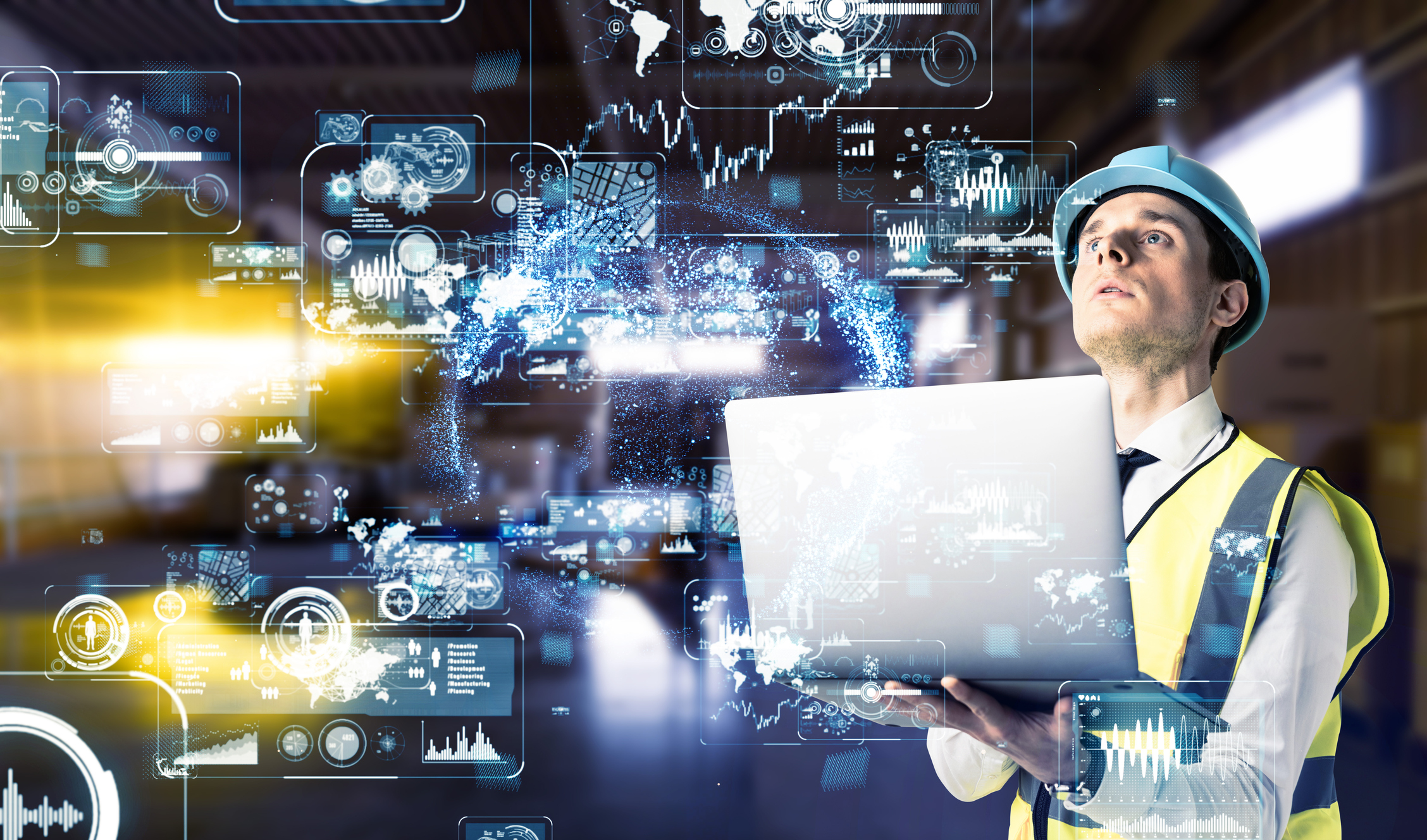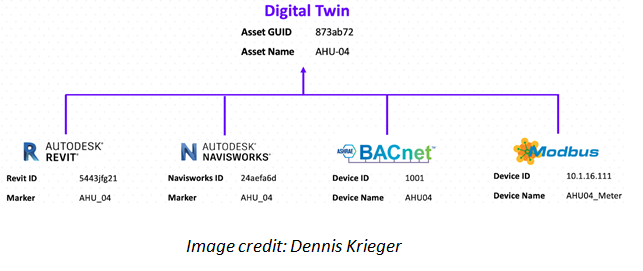
Houston, we have a problem.
Quickly after the oxygen tanks exploded early into Apollo 13’s mission in April 1970, the astronauts were fighting for their lives. The whole world held its breath as the now-famous rescue ensued. Engineers in Houston scrambled to sort through technical issues from hundreds of thousands of miles away.
The rescue was successful because back on earth there was an identical copy of the spacecraft—Apollo 13’s twin. The team could quickly test solutions on the ground without adding risk to the astronauts in space.
Almost 50 years later, NASA uses the same strategy to understand and manage systems and machines across the solar system. Except today, the twins are virtual and there’s a fancy buzzword to describe them: Digital Twins.
Read any marketing-driven article today and you’ll learn that digital twins are about to save the world from climate change, create world peace, and wipe our virtual and physical butts. According to Gartner, digital twins were at the peak of the famous Hype Cycle for Emerging Technologies in 2018—entering the Peak of Inflated Expectations and headed towards the Trough of Disillusionment. They estimated that digital twins are 5 to 10 years away from the “Plateau of Productivity” where a technology becomes mainstream and fully operational.
Gartner defines a digital twin as:
“A software design pattern that represents a physical object with the objective of understanding the asset’s state, responding to changes, improving business operations and adding value.”
By that definition, virtually all organizations that manage physical assets have some sort of digital twin in operation. And it’s been that way for decades. For example, consider a single data point representing one quality of the health of one asset. Every commercial building I’ve ever been inside has that covered.
Here lies a paradox: How can a technology be simultaneously proven and in-use for decades AND be 5-10 years from maturity? That’s very confusing, and I think it’s because we’re talking in circles. There’s little consensus on what a digital twin is, what it does, and how the latest ultra-hyped versions are any different than what we’ve been doing for years.
This post is the result of trying to untangle that mess for myself, with the hope it will be useful for you as well. As you’ll see, I think the history of digital tools for buildings is a great jumping-off point.
The History of Digital Tools for Buildings
I’ve worked in the buildings industry for 10 years now (woohoo!). Much of that time has been spent with digital representations of mechanical systems or whole building energy models. These types of tools, along with the others listed below, are mainstream in our industry. It turns out that we’ve been inching closer to digital twins this whole time. It’s the next progression. To illustrate, let’s walk through them in the order that I encountered them, starting at the beginning of my career.
(1) Energy Models
Whole building energy models—built in tools like eQuest, OpenStudio, Trane Trace, etc—are used in design and energy management practices to calculate the energy consumed in a building for every hour of the year.
By creating a digital version of the building, different alternatives for a target energy use (e.g. net-zero) can be digitally simulated and tested before being implemented in real life. A better envelope, a different orientation to the sun, more distributed energy resources, a different HVAC design, etc.
This makes it possible to test different design alternatives in the context of the exact user interaction and specifics of the building. Also, knowing the savings and/or ROI for different alternatives helps building owners and investors decide whether or not to pursue them.
(2) Building Automation Systems
We use it to operate and monitor our buildings. It provides streaming data, a user interface with graphical ways to explore the equipment, and of course control of the equipment itself. The BAS was the IoT for buildings before IoT was a thing.
(3) Building Information Models (BIM)
Building information models are three-dimensional representations of buildings that aid in the construction process. I’m not sure I could say it better than Jenana Roper did:
“BIM is a small sub-set of a Digital Twin, frozen in time – typically during the design and construction phase. BIM is a finely tuned tool for more accurate design, collaboration, visualization, costing and construction sequencing phases of a building’s life. Its primary purpose is to design and construct a building, and post-construction, it serves to provide a digital record of a constructed asset. BIM is only focused on buildings – not people or processes. However, BIM is a small but very useful input into a Digital Twin, as it provides us with an accurate digital asset register and location data and is a great starting point for both a Smart Building and a Digital Twin.”
(4) Smart Building Platforms
A smart building platform integrates multiple previously-siloed building systems into one platform, provides enhanced control functionality, and typically engages with occupants. Some have called these Building Engagement Platforms, Building Operating Systems, Integrated Building Management Systems, or IoT platforms. There are probably many more buzzwords grouped under this umbrella.
The platform is the “middleware” between devices, people, and software applications. It differs from BAS in the scope of the data it connects with—ideally it connects everything digital into a common data model: HVAC, lighting, plug loads, meters, access control, fire suppression, grid-interaction, IoT, etc. People (occupants, facility managers, etc) interact with the platform through built-in applications or third-party applications (like an App Store).
(5) Analytics
Building analytics comprise another important puzzle piece of the digital twin. As I’ve outlined in my framework for evaluating new smart building technologies, analytics platforms transform data into new capabilities that aid in the optimization of the building. Example capabilities include fault detection and diagnostics (FDD), advanced supervisory control, and machine learning.
Defining the Modern Digital Twin
What is a modern digital twin then? What does it add to historical versions? As an industry, we’ve yet to converge on a definition. I’ll propose one way to think about it: a modern digital twin combines all of the above.
Static models are enriched by live data and the systems using live data are enriched by better models. For instance, an energy model would be more useful if it was calibrated to actual conditions in the building as it evolves over time. If that could happen automatically, even better.
Similarly, a BIM needs to be transitioned from construction-focused to O&M focused—meaning it needs static data (e.g. maintenance logs, O&M manuals, warranties) and live data from the BAS and energy meters.
 No longer are models or simulations being operated in isolation from the physical world—there must be a connection between the physical and the digital systems.
No longer are models or simulations being operated in isolation from the physical world—there must be a connection between the physical and the digital systems.
With the combined functionality of all of these approaches, the digital twin is more intelligent and able to provide better analytics and control. It’s greater than the sum of its parts.
To summarize, let’s define what a modern digital twin needs to include:
- A three-dimensional model—traditional models that describe the building’s physical attributes such as materials and spatial position
- Static data—all of the details that add context, from O&M manuals to model numbers to human profiles
- Streaming data—data from physical building systems and third-party applications like weather feeds
- Computation & Optimization—analytics and advanced supervisory control
- A platform for applications—the middleware connecting everything together
- Human interaction—Interaction, feedback, and a user interface for occupants and operators
Drop any one of these and, in my opinion, you no longer have a modern digital twin.
In the next installment of this series, I walked through what digital twins actually do for building owners and why they will change the buildings industry. Check it out and sign up for the free weekly NEXUS newsletter here: Why We Need Digital Twins.
James Dice, PE, CEM, CMVP, is the founder of NEXUS, a blog, podcast, and membership community of design engineers, energy managers, technology vendors, building operators, and real estate investors. We’re trying to bridge the gap between two cultures—that of technology on one end and millions of commercial buildings on the other—to understand where we’re headed as an industry.

